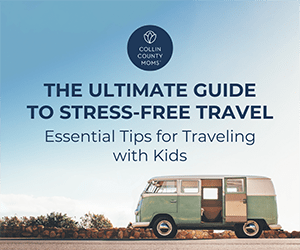A child’s learning difference presents new challenges in child-rearing.
We parents generally have the same goal for our children, don’t we? We just want them to be happy, healthy, functioning humans now and for a lifetime.
Whether at school, home, or on the playground, we want to ensure our child can thrive. However, the primary years of education are among the most important because those years set the stage for how your child will progress throughout their entire life.
Every child is unique and has their own learning abilities and style. Sometimes, the traditional style of education simply does not fit the specific needs of your child. If your child has a disability or learning difference, it is vital to develop a plan that helps them get the most out of their educational experience.
Types of Educational Plans for Learning Differences
There are two types of plans that schools generally implement when children have a disability or learning difference: 1) An Individualized Education Program (IEP) and 2) a 504 plan. While the two are similar, there are some key differences between the two.
Navigating the educational system when you have a child with learning differences and special needs can be daunting, so use this information to help you on your journey.
Similarities Between the IEP & 504
Both the IEP and 504 plans:
- Provide a blueprint for additional support in the classroom, which guides the teacher in knowing how your child learns best.
- Require that a team of individuals who know the child be present when creating the plan.
- Are governed by law. The Individuals with Disabilities Education Act (IDEA) and the Section 504 Rehabilitation Act of 1973 dictate how schools execute the plans. But, more importantly, they provide reassurance that schools must administer the plans.
- Are evaluated regularly to make adjustments where necessary. The IEP is updated in writing yearly, whereas the 504 is less strict and is informally assessed each year or as needed. The 504 can be a verbal agreement, but it is always best to write the plan.

Differences Between the IEP & 504
- While a 504 is written to accommodate any disability and covers a wide range of struggles that interfere with learning, the IEP must cover one of thirteen specific challenges like autism, emotional disturbance, speech or language impairment, visual or hearing impairment, cognitive impairment, other health impairment (like ADHD, which impacts executive functioning), or a specific learning disability (like dyslexia or dyscalculia).
- Families can ask the school district to provide a formal educational evaluation for their child with an IEP, but with a 504, families must seek outside testing for their child.
- States can receive additional funding to help accommodate students with IEPs, but those with 504 plans receive no additional funding for these plans. However, because 504 plans must be implemented by law, the federal government can take away funding from schools when they find the methods not adequately implemented.
Advocating for Your Child’s Learning Difference
As both a counselor who works with parents of children with learning differences and a parent of a child with 504 plans to help with ADHD, I cannot stress enough the importance of understanding your rights within the educational system and the need to advocate for your child.
The plans are in place because it helps your child learn in a way that’s optimal for them. Without the plan, there is a great possibility of undue struggle.
Do not be afraid of taking an active role in your child’s education.
Here are a few ways you can advocate for your child and their education plan:
Get knowledgeable.
Learn everything you can about your child’s disability. You know your child better than anyone, and that’s why you’ve advocated for them long before there was a formal diagnosis. Once there’s a diagnosis, read everything you can about the disability to understand your child better.
Understand advocacy.
Advocacy means speaking up when you have a concern. Don’t be afraid to speak up when you need answers to questions or reassurance. It’s your right as a parent, but it’s also the absolute best way to get your child’s needs met at school.
Build relationships.
Talk to others who have walked the learning differences journey. Build relationships with administrators, starting with the teachers. If you aren’t getting the response you need from the teacher, reach out to the IEP and 504 coordinators (every district has one) or the principal.
Ask questions.
When something feels off, ask questions. But, more importantly, get good at listening. You know your child, learned about their disability, and understand how they thrive. Now, ask your child’s team (the diagnostician, teachers, counselors, and other supporters).
Seek help.
As a counselor, I think the healthiest people are in counseling. It’s true! No man is an island, and we can’t navigate these situations alone. You’ve built relationships with friends, now join support groups, find a counselor, or find a paid advocate that can help you rally around your child. You deserve it, and so does your child!
You Are Supported
Look, having a child with a disability is challenging. I know that (intimately), and so do you. You aren’t alone!
The system can be a frustrating one to navigate, but once you start gathering information, asking questions, getting answers, and building strong relationships with supporters, you’ll have a recipe for absolute success!













